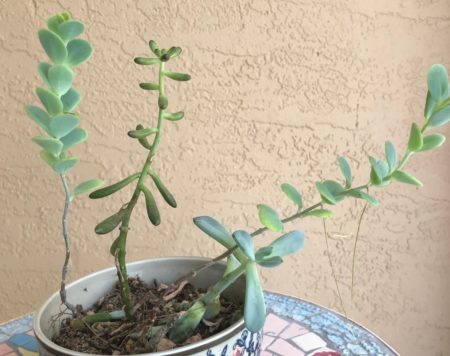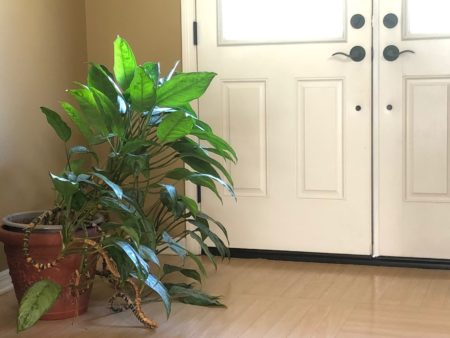Plants are gorgeous and wonderful living things to have in our home, but they can definitely be finicky. Sometimes brown or yellow spots occur for seemingly no reason at all. However, there are other signs that plant exhibits to let you know it’s in distress. Regarding lack of or insufficient light, the signs are obvious once you know what to look for. Kalamazoo’s number one florist, VanderSalm’s Flowershop wants to help you keep your plants healthy and thriving, so continue to our simple guide on identifying lighting issues your plant may have and how to find the perfect light balance for your plant.
What to Look For in Your Plant Regarding Its Lighting Needs
Leggy
A term that refers to plants with skinny, sparse stems, if your plant is leggy, then it’s not getting enough light. Another sign to look for is the spacing between the leaves, which is called the internode. Plants with large internodes are far from lush-looking and could use better lighting.

Smaller Leaves
If it appears the new leaves aren’t growing in size to match the larger, older leaves, then move the plant to a sunnier spot and make to turn it every time you water so all leaves get adequate amounts of sun.
Leaning
Another reason to give your plant a quarter turn when watering, or at least once a week, is to prevent leaning. If you see that your plant is unbalanced with one side clearly turned to reach more light, then you need to move it closer to the light source and ensure all leaves get the same amount of light.

Abnormal Leaf Color
Chlorophyll is what gives a plant’s leaves their green color and is an essential part of the photosynthesis process of converting light into food for the plant. When there isn’t enough light, chlorophyll is no longer produced resulting in leaves becoming pale green, then yellow, and eventually dropping off.
Slowed Growth
Plant growth should be noticeable on healthy and thriving plants that get plenty of sunlight. If you’re not seeing significant growth or no growth at all, then your plant is most likely not getting enough light. Light is food for plants and without it, just as with humans, the plant will not grow like it could.
Getting the Light Right
Finding the perfect lighting for plants can be tricky as it is possible for plants to get too much light and end up with scorched, dried leaves. Only sun-loving plants such as cacti, palms, and succulents should be in direct sunlight for most of the day. For most other indoor plants, indirect bright light is ideal. An example of this is a well-lit room that gets dappled light or sunlight diffused by a sheer curtain.

Just remember that the further away you move your plant from a light source, the light’s power drops exponentially. So you may love how that corn plant looks the far corner of your room, but if strong enough rays don’t reach it, the plant will suffer. Sometimes is not feasible to have a plant in a spot that gets enough light, in which case you should invest in a grow light that mimics natural light and allows to grow plants in any lighting condition.
Finding the right amount of light for your plants takes time and patience, but as long as you listen to what your plant is telling you, eventually, you will find their sweet spot.


